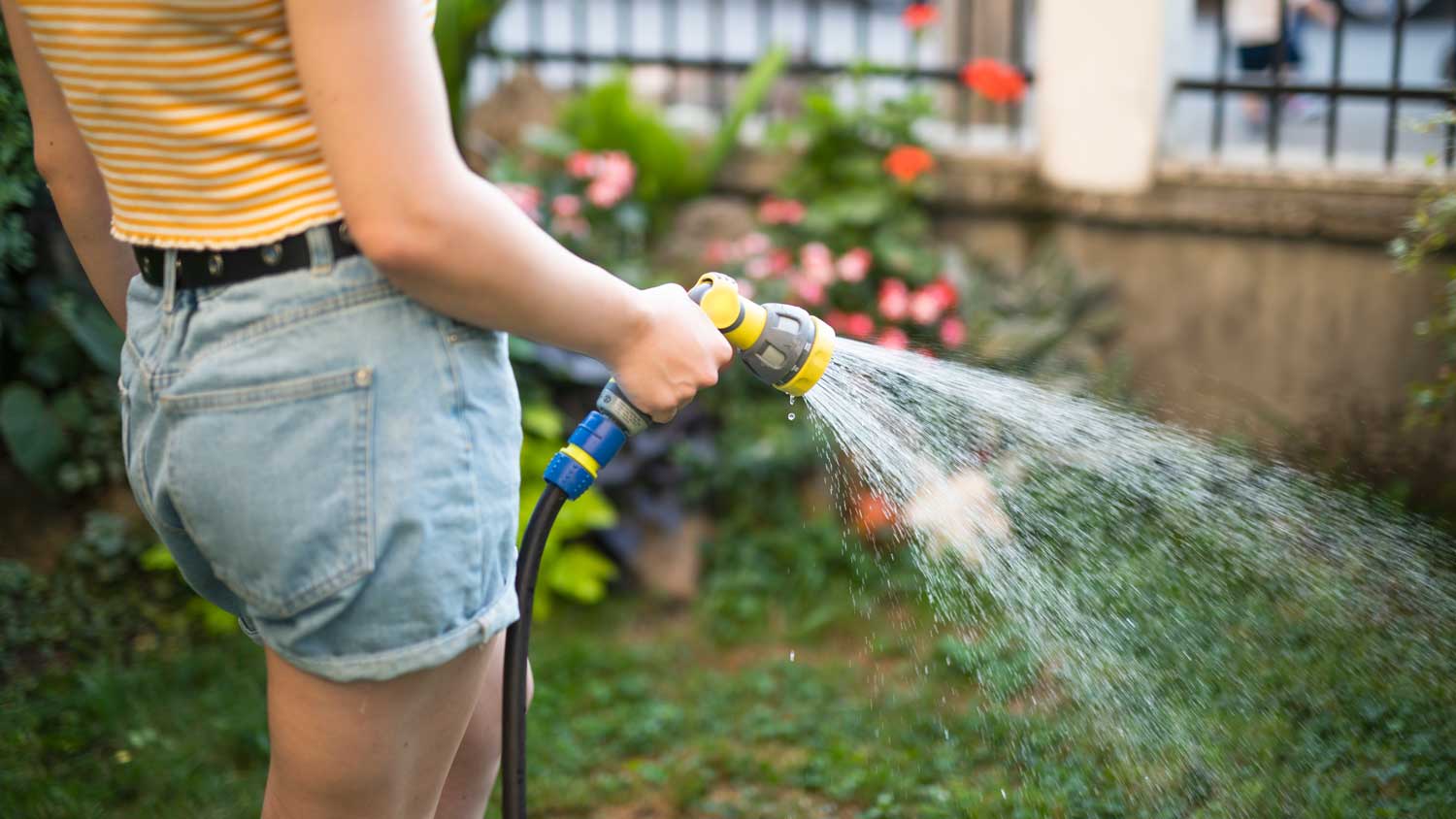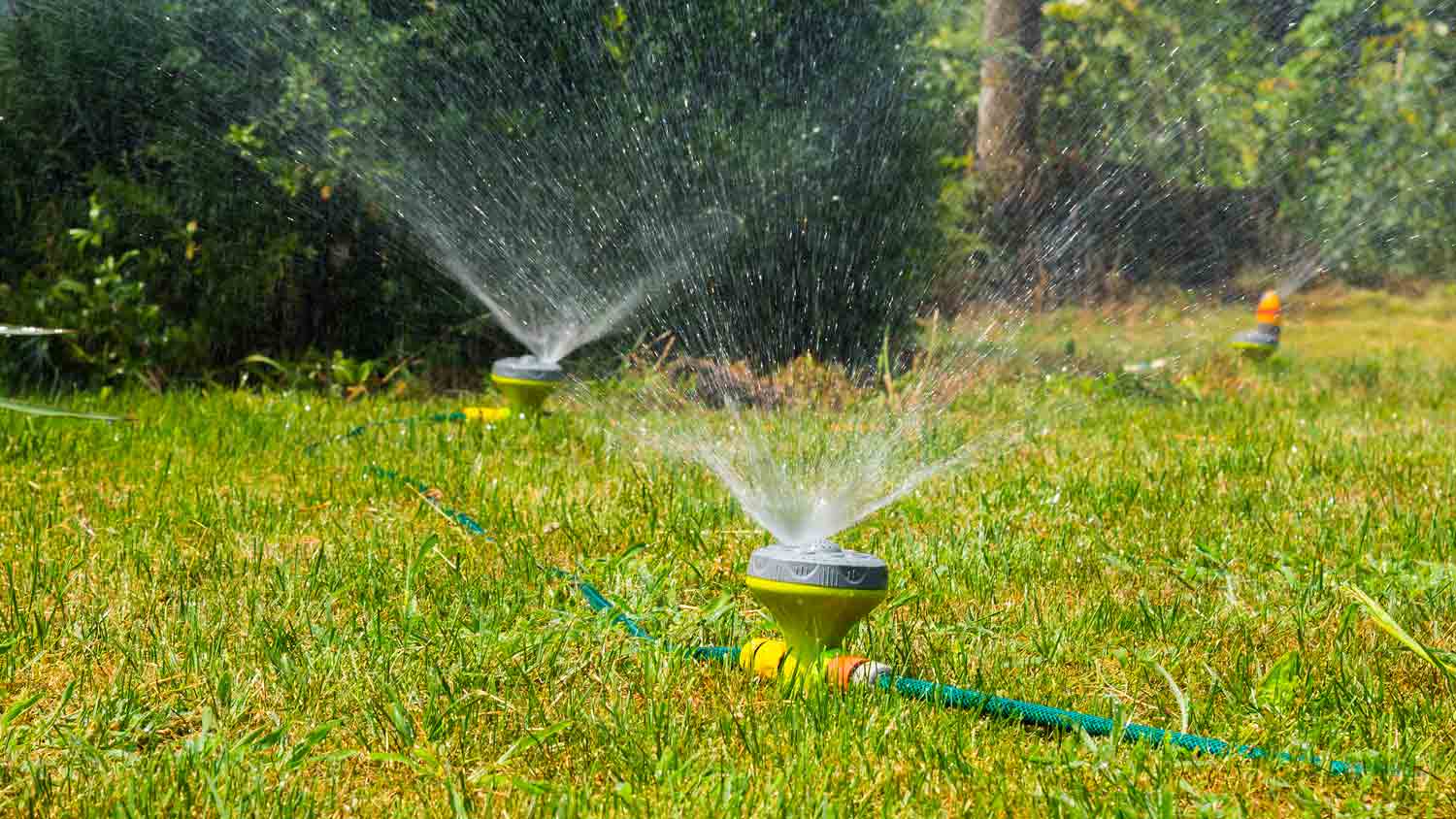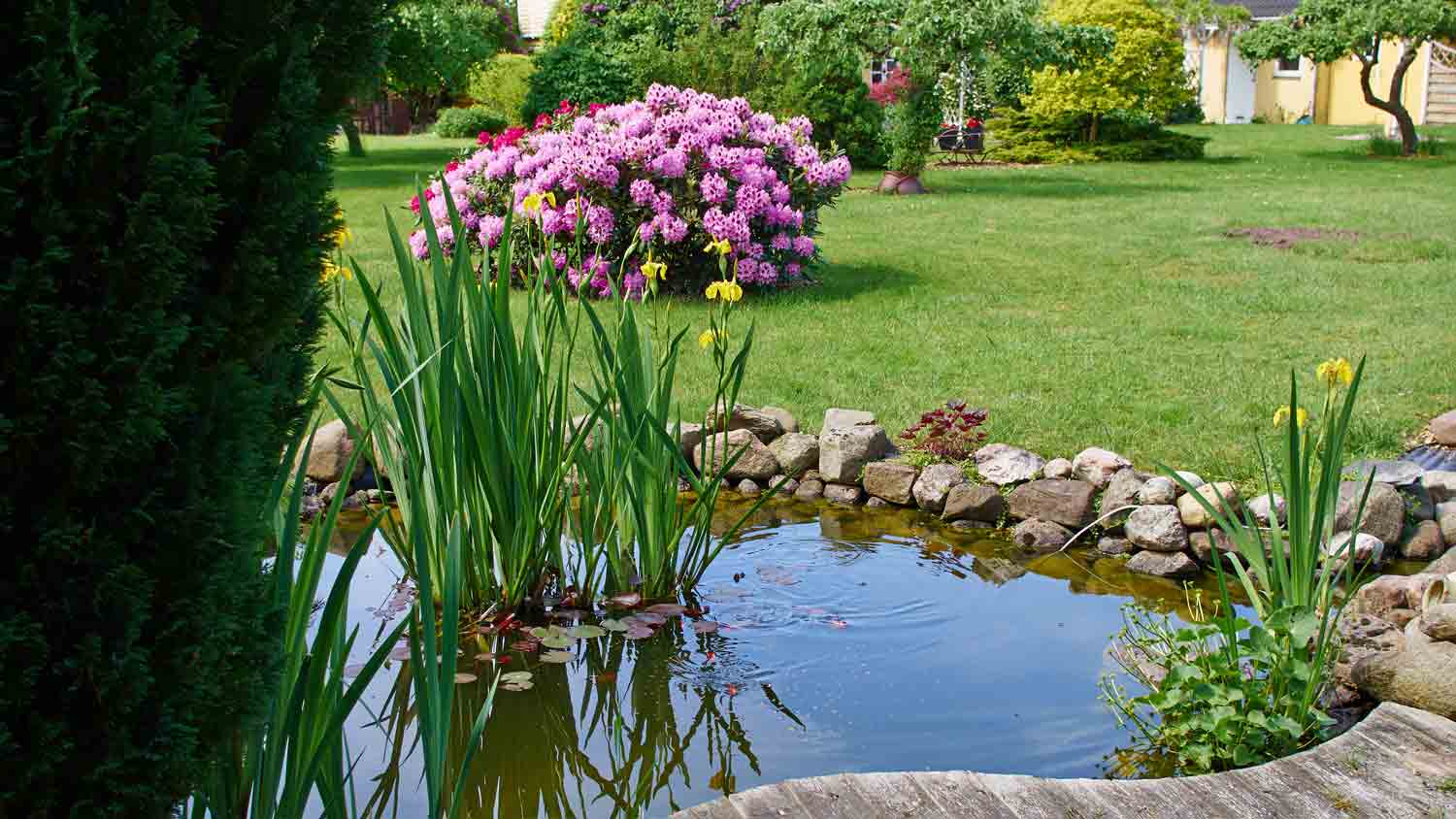
From your flower beds to your walkway, river rocks make a classic addition to your landscape. Learn about the cost to install river rock to set a proper budget.
New landscaping needs consistent watering to take root, grow, and flourish


The size and type of plant will affect its watering needs when newly planted.
Soil with more sand may require extra water to meet the new plant’s needs.
Clay soil with less drainage may require less water to protect the roots from fungus, mold, and rotting.
New landscaping needs daily watering (sometimes multiple times per day) for the first week.
The budding joy of new landscaping can quickly turn to sorrow if plants are not cared for correctly. Many factors, from the climate, plant type, and weather patterns, can influence how much and how often to water new landscaping. Keep reading to make sure your plants get the water they need to flourish and take deep root.

Landscaping costs can be high, so proper watering and plant care will protect your investment. See the following guidelines for frequency:
Water daily for the first two weeks after planting.
From weeks three to 12, water every two to three days.
Once 12 weeks have passed water once a week until roots are established.
Keep in mind that container plants may need more frequent water during the peak growing season. Containers dry out more easily, so keep a watchful eye on soil moisture—check it before watering. If it is moist to a depth of about one to three inches for flowers and grasses or six to 12 inches for trees and shrubs, you may not need to water as much or as long (or at all if it has rained).
Too much water can deprive the roots of oxygen or encourage mold or fungal growth. But you also have to factor in the size of the plant. For example, a tree with a large root ball should be in soil that is moist and close to the depth of the root ball.
Watering frequency will vary by the plant and soil type, season, and weather. For example, sandy soil drains quickly, which means new plants may need longer watering times or more frequent watering. Clay soils are denser with slower drainage, so you might need less water volume or watering frequency. Similarly, planting in the summer will require more watering at higher volumes than when planting in the winter.
| Plant Type | Volume of Water or Watering Time Per Day |
|---|---|
| Trees (1- to 3-inch caliper) | 1–3 gallons |
| Trees (4- to 6-inch caliper) | 4–9 gallons |
| Shrubs | 1/4–1/3 the volume of the shrub's original container |
| Flowers | Enough water to keep the soil moist |
| Grass (seed) | Five to 10 minutes, or enough water to moisten the soil without being soggy |
| Grass (sod) | Three times daily for 15 to 20 minutes |
There is some variation in how often to water new plantings based on the plant type, soil type, and weather. For trees, measure around the trunk to get the circumference (or caliper). For each inch, a tree generally needs about a gallon of water per day. That can vary by tree type, so watch the soil moisture and leaf color for signs of over- or underwatering. The watering volume for shrubs is typically based on the original container size.
Some types of landscaping, like grass seed, can be finicky. You do not want the seeds to dry out because they can go dormant, but you do not want to overwater or wash them away. In the case of grass seed, water only enough to moisten the soil and promote germination. Sod, however, requires multiple waterings per day to promote root growth.
Check the soil after each watering to ensure it is penetrating deeply to encourage root growth. The soil should be moist one to three inches deep for flowers and plants with shallow root systems. For larger plants like trees and shrubs, the soil should feel moist to about a six- to 12-inch depth, depending on the plant size.
There is some debate in the gardening world about the best time to water landscaping. The soil should feel dry on top before watering; however, before sunset, it should feel dry or nearly dry to prevent disease. Consequently, optimum watering times tend to be first thing in the morning or after the heat of the day but before sunset so the plants are not too wet overnight.
Leaves left wet overnight can develop powdery mildew and other problems. At the same time, you do not want to water in the heat of the day because evaporation may prevent plants from getting adequate hydration.

Sprinkler systems can be lifesavers for new landscaping. If you are putting in all-new landscaping or re-landscaping a large area of your yard, a sprinkler system lets you program when and how long the system waters each day. You can adjust head positioning as needed to make sure all of your new plants get watered.
While sprinkler systems are ideal in many locations and circumstances, you might want to think twice if you live in a northern climate. Frequent freezing and thawing cause expansion and contraction that can damage the system.
You can always consult a local landscaper about plant choices, placement, and landscaping care if you are not sure where to begin. You can also maximize your plants’ health after planting with the following tips:
Water trees, shrubs, and plants at the base near the soil and roots.
Moisten the soil before planting.
Do not water in the hottest part of the day.
Use a timer to turn the water on and off to prevent overwatering.
When watering grass seed, try to water from above with a gentle sprinkler to prevent washing away the seeds.
Use quick-growing and drought-tolerant grasses, which require less watering at the initial planting and throughout their lives.
Use native plants accustomed to the climate to protect your yard and home.
From average costs to expert advice, get all the answers you need to get your job done.

From your flower beds to your walkway, river rocks make a classic addition to your landscape. Learn about the cost to install river rock to set a proper budget.

Looking to step up your golf game without leaving your property? This guide details backyard putting green costs to help you decide if this project is worth it.

Growing plants with a hydroponic gardening water system can be a big investment. To know how much it costs to build a hydroponic garden, consider the system, technology, size, and whether you hire a pro. This guide will help calculate costs.

When building a pond, you’ll have to choose a pond liner, which come in various materials and sizes. So, what size pond liner do you need? Let’s break it down.

Will vinegar kill grass and weeds? Get the scoop on what vinegar does to grass, when to use it, and things to consider.

It isn’t immediately obvious who to hire when you need to regrade your yard. Here are the contractors perfect for this critical home project.